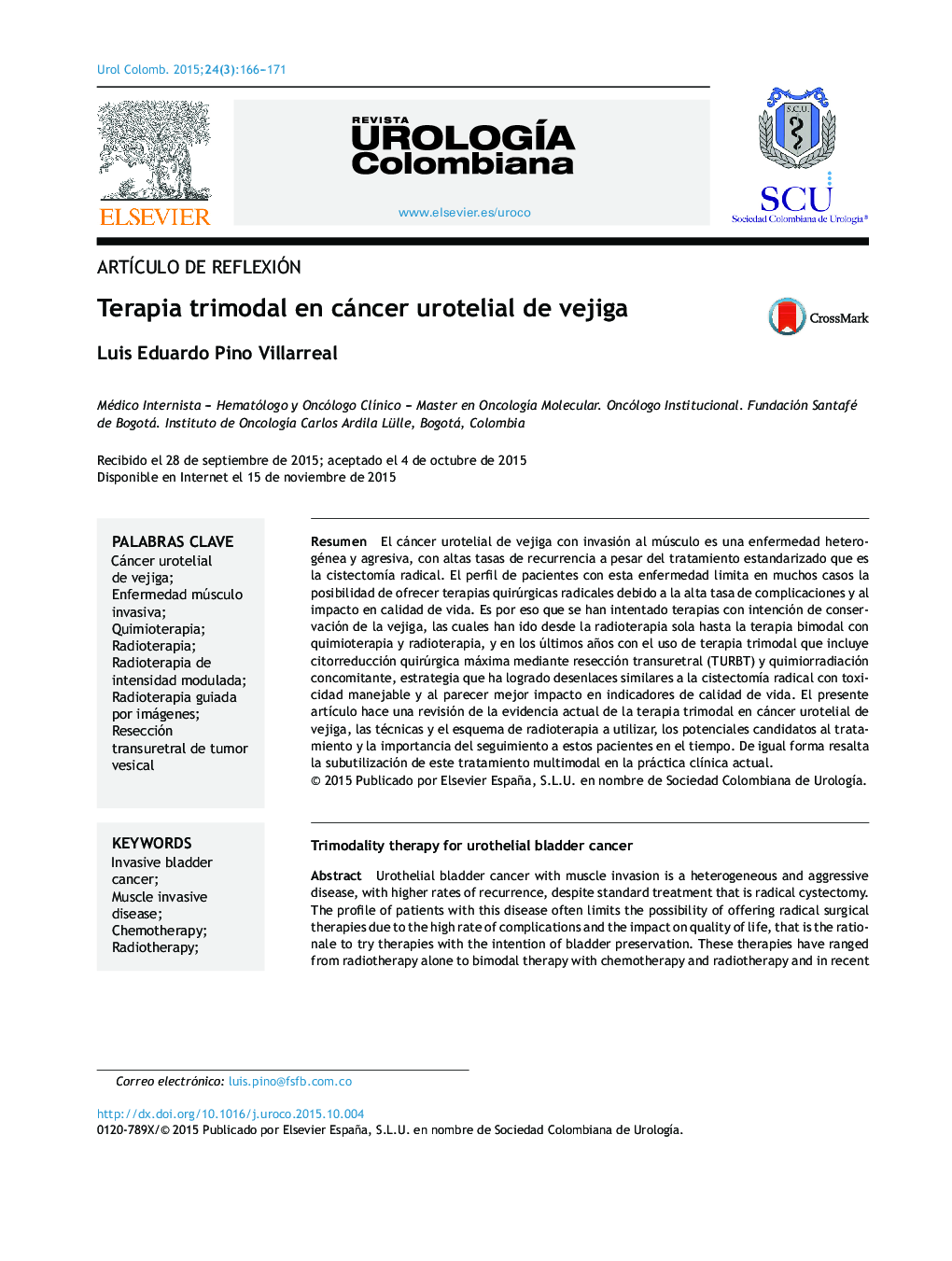| Article ID | Journal | Published Year | Pages | File Type |
|---|---|---|---|---|
| 4274829 | Urología Colombiana | 2015 | 6 Pages |
Abstract
Urothelial bladder cancer with muscle invasion is a heterogeneous and aggressive disease, with higher rates of recurrence, despite standard treatment that is radical cystectomy. The profile of patients with this disease often limits the possibility of offering radical surgical therapies due to the high rate of complications and the impact on quality of life, that is the rationale to try therapies with the intention of bladder preservation. These therapies have ranged from radiotherapy alone to bimodal therapy with chemotherapy and radiotherapy and in recent years with the use of trimodal therapy that includes: Maximal surgical cytoreduction by transurethral resection (TURBT) and concomitant chemoradiation. Trimodal therapy in urothelial bladder cancer has achieved similar outcomes to radical cystectomy with a manageable toxicity profile and apparently better impact on quality of life indicators. This article reviews the current evidence of trimodal therapy in urothelial bladder cancer, techniques and radiation scheme to use, potential candidates for this treatment and the importance of the follow up for these patients over time. Similarly highlights the underuse of multimodal treatment in current clinical practice.
Keywords
Related Topics
Health Sciences
Medicine and Dentistry
Urology
Authors
Luis Eduardo Pino Villarreal,
